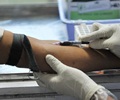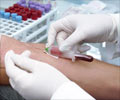A new hepatitis B has proved non-toxic, and is able to produce strong immune responses in animal studies, according to University of Michigan scientists.
They believe that it may make it possible to immunize large numbers of children and adults in Asia, Africa, and South America efficiently and safely.Experts at the Michigan Nanotechnology Institute for Medicine and Biological Sciences have revealed that the vaccine is based on a super-fine emulsion of oil, water, and surfactants placed in the nose.
Reporting the study online in the journal PLoS ONE, they said that the nanoemulsion represents a new delivery method for an antigen already used in existing hepatitis B vaccines to activate the body's immune defences.
"Our results indicate that needle-free nasal immunization, using a combination of nanoemulsion and hepatitis B antigen, could be a safe and effective hepatitis B vaccine, and also provide an alternative booster method for existing vaccines," says Dr. James R. Baker, Jr., the study's senior author and director of the institute. He also is Ruth Dow Doan Professor and allergy division chief in the U-M Department of Internal Medicine.
The nanoemulsion is made up of soybean oil, alcohol, water, and detergents emulsified into droplets less than 400 nanometres in diameter.
According to the researchers, the new type of hepatitis B vaccine will not have rigid cold storage requirements, and could require fewer administrations than current vaccines, which require three shots given over a period of six months.
Advertisement
The vaccine avoids the risk of spreading needle-borne infections, say the researchers.
Advertisement
The researchers did not find any local inflammation at the nasal site of administration with the new vaccine.
Paul E. Makidon, a U-M research fellow, says this finding attains significance because one of the major concerns for nasal administration of vaccines is that they can find their way to the olfactory bulb in the brain and cause side effects.
"Our studies, however, indicate no inflammation and no evidence of the vaccine in the olfactory bulb," he says.
The nanoemulsion technology is patented by U-M, and licensed to Ann Arbor-based NanoBio Corporation.
Source-ANI
RAS/S















